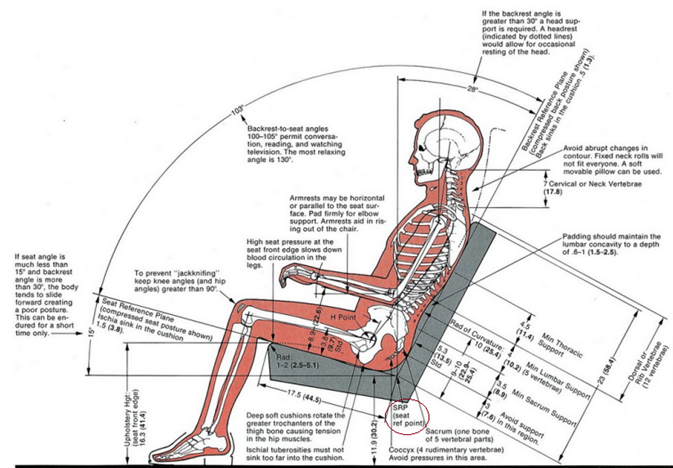Creating the Perfect Crew Seats
Blog

How to position a seat in armoured vehicle
Any seat design, including an Energy Absorbing one, requires knowing the seat position in the vehicle and the seat expected functionality.
The seat position is naturally derived from the occupant position in the vehicle. There are usually two reference points by which the occupant position is defined:
– SgRP/ H-point
– SRP
Let’s have a look at both.
H-point
Basically, the Hip point, known as H-Point, refers to the theoretical pivot point between the torso and the upper leg portions of the human body.

Practically, according to the SAE J1100 standard H-point is the center of rotation between the torso component and the thigh component, in the designated devices used in the definition and measurement of vehicle seats accommodation.
SgRP
The SgRP refers to the theoretical point defined by the manufacturer as Seating Reference Point for a given accommodation position that
– Sets the rearmost and lowermost designed normal driving position among those provided.
– Simulates the hinge location, defined by X, Y, Z coordinates, between human torso and thigh.
– Usually defined relative to the vehicle floor (H30):

The SgRP is equivalent to the H-Point when referring to the theoretical pivot point between the torso and the thigh of the driver when sitting in the “nominal” position.
SRP
The Seat Reference Point, known as SRP, refers to the intersection point of the midplane of the seat, the “backrest plane” and the “seat pan plane”.
Although it is derived from the seat geometry, it is associated as well with the occupant’s sitting posture.
The SRP should be coincident with the theoretical intersection point between the occupant midplane, the theoretical plane coincident with the occupant upper back and lower back and the theoretical plane coincident with the occupant buttock and hip.

Once one of these reference points is provided the seat location in the vehicle can be set.